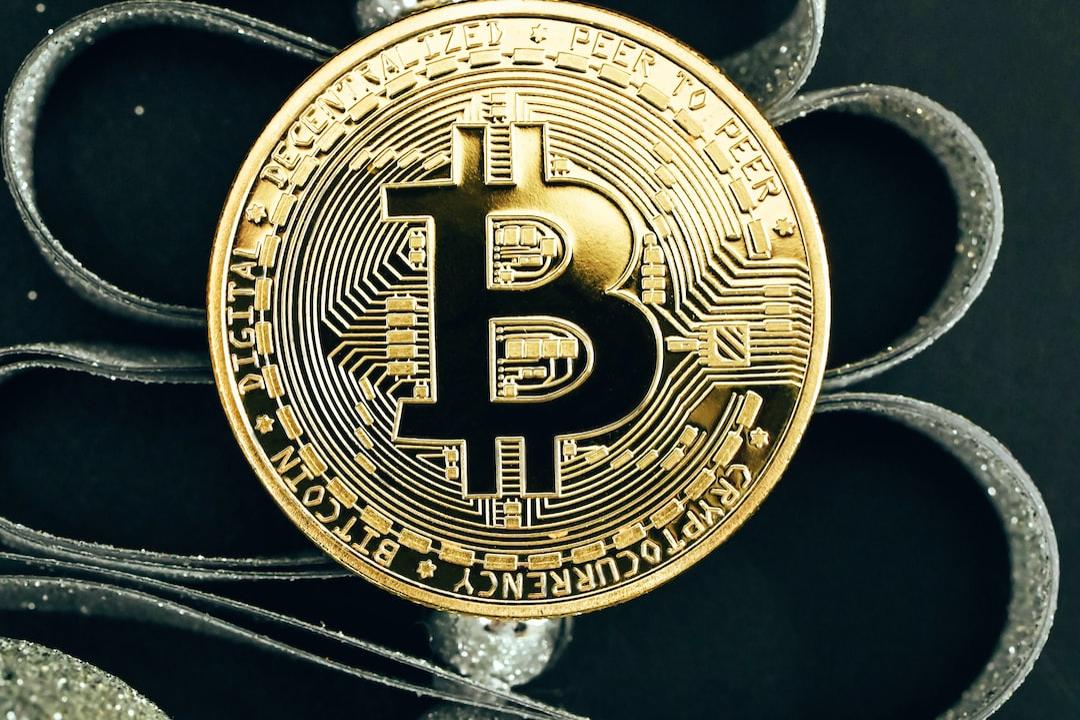Binance Releases User Survey Report on “Asia Crypto Security Survey”
Binance today released a user survey report titled “Asia Crypto Security Survey,” revealing that over 80% of respondents have enabled two-factor authentication (2FA), and 73.3% of users review the recipient address before making transfers, indicating a significant increase in users’ awareness of information security.
(Background: Zhao Changpeng’s 8000-word article detailing: How to Ensure Your Crypto Assets are Secure?)
(Supplementary Background: CZ Urges Urgent Action: Macs with Intel Chips Have Major Vulnerabilities, Update ASAP to Protect Your Assets)
This article is a press release authored and provided by Binance and does not represent the views of the BlockBeats.
According to a large-scale user survey conducted by Binance, over 80% of respondents have enabled two-factor authentication (2FA), and 84% trust protection mechanisms such as the Binance Investor Protection Fund (SAFU), showcasing a significant improvement in users’ awareness of information security and an increasing confidence in exchange-led protection systems.
The survey titled “Asia Crypto Security Survey” collected a total of 29,847 valid responses from users in Southeast Asia, South Asia, and East Asia, making it one of the most comprehensive observations to date. It provides in-depth insights into how users in the region perceive and practice security measures, as well as how exchanges and the industry can further support users through tools, education, and proactive protection mechanisms.
From “Awareness” to “Action”: Changes in Security Habits
According to the survey data, 47.2% of respondents are high-frequency traders who use cryptocurrency exchanges multiple times a day. Notably, nearly 30% of respondents entered the cryptocurrency market in the past six months, reflecting the rapid growth trend of the Asian crypto market.
Despite the rapid expansion of the user base, the survey also revealed a clear disparity in security behaviors: while most users possess basic protective awareness, the adoption of advanced protection mechanisms remains insufficient:
- 80.5% of respondents have enabled 2FA, indicating good awareness of basic information security measures.
- However, only 17.6% have enabled address whitelisting, and only 21.5% use anti-phishing verification codes.
- Additionally, 34.4% of respondents store their private keys on online devices, with the proportion reaching as high as 42% in Southeast Asia, underscoring the importance of ongoing education and practical tools to simplify the security protection process for all users.
Optimistically, 73.3% of users review the recipient address before making transfers, demonstrating a focus on risk management in daily operations.

Overall, the survey indicates that continuous education is crucial in empowering users to confidently adopt advanced information security measures.
As Users Become More Proactive, Trust in Exchanges Increases
The survey shows that despite 40.7% of respondents having encountered cryptocurrency-related scams, most now exhibit a higher level of resilience:
- More than half of respondents (53.4%) stated that they would immediately contact the exchange to freeze their assets when faced with a scam—demonstrating basic preparedness and trust in the platform’s response capabilities.
- Moreover, 84% of respondents indicated they trust protection mechanisms like the Binance Investor Protection Fund (SAFU).
Although common scams such as phishing links (69.5%), false insider information (54.9%), and fake airdrops (52%) still exist, the survey results show that an increasing number of users can identify potential risk signals, becoming more informed, proactive, and willing to use the security mechanisms provided by the platform.
From Passive to Proactive: Users Have Higher Expectations for Exchange Security
The survey results indicate a significant shift in user expectations—from passive protection to real-time, intelligence-driven threat management. Users increasingly expect exchanges to proactively detect, prevent, and mitigate potential threats before harm occurs.
- 62.5% of respondents listed “real-time threat interception” as their top security need, reflecting a strong demand for automated defense and alert systems.
- 50.4% of respondents expressed the need for device-level threat detection features, such as malware identification and alerts for compromised devices.
- Nearly half of respondents support the creation of a suspicious address database and the implementation of biometric verification to enhance identity protection measures.

This shift reflects a change in user mindset: exchanges are no longer merely seen as platforms for asset trading. Today, users expect industry leaders like Binance to set new standards, especially in creating intelligent and intuitive security systems.
Users Prioritize Private Key Protection, Binance Enhances Decentralized Wallet Security with MPC Technology
In the realm of decentralized wallets, users prioritize functionalities that offer stronger control and intelligent threat detection. The survey results indicate that wallets are no longer just tools for storing assets, but serve as an intelligent security layer for protecting assets.
- 62.8% of respondents listed enhanced private key protection as their most anticipated wallet feature—highlighting the strong demand for more intuitive and secure self-custody tools.
- 50.4% of respondents desired better backup and recovery options, which are key to enhancing users’ sense of security and control over their assets.
- Over 40% of respondents support the development of proactive fraud detection tools, such as phishing alerts, suspicious transaction monitoring, and hacker protection features.

Binance meets these user expectations through its Binance Wallet, which plays a key role in the decentralized wallet sector. The wallet utilizes MPC (Multi-Party Computation) technology to eliminate the need for seed phrases and securely splits the private key into three encrypted keys.
Simple and Localized Education is Key to Bridging the Security Gap
Education remains a crucial pillar of user protection, with the survey showing that users are eager for more practical and accessible learning experiences:
- 55.8% of respondents believe existing materials are “too technical and difficult to understand.”
- 39.7% prefer localized case studies to enhance awareness of real-world scenarios.
To effectively promote anti-fraud education, it is also essential to understand the channels through which users most frequently encounter misleading or fraudulent content. Throughout the Asia-Pacific region, such content is most commonly found on X (formerly Twitter, accounting for 57%) and Telegram (51.2%), although contact channels vary slightly across different markets—for instance, in Southeast Asia, Facebook is the primary platform (61.1%), while in India, WhatsApp is the key channel (42.5%).

61.3% of respondents indicated their willingness to participate in “anti-fraud simulation tests” led by exchanges to enhance their alertness—especially when these tests incorporate rewards or gamified designs, showing that users are not only willing but eager to learn.
Our cybersecurity team regularly shares easy-to-understand articles that break down complex topics such as SMS phishing (smishing) and phishing attacks, helping users fill knowledge gaps while retaining all key details. We invite you to check out our security column series to embark on a learning journey filled with insights that help you identify potential risks!
Binance: Strengthening Security Protections Across the Board
According to Chainalysis’ 2025 “Crypto Crime Report,” cryptocurrency addresses used for illegal purposes received a total of $40.9 billion in funding in 2024. Although this number may rise as more illegal addresses are identified, the proportion of illegal trading volume relative to overall on-chain activity has significantly decreased—from 0.61% in 2023 to just 0.14%, indicating the effectiveness of proactive security measures implemented across the industry.
Binance continues to maintain its leading position in security and is doubling down on its commitment to safety and compliance, investing hundreds of millions of dollars to strengthen platform protections and build overall industry resilience.
Binance Security Chief Jimmy Su stated, “In 2024 alone, we successfully prevented over $4.2 billion in potential user losses, assisted in recovering $88 million of stolen or lost assets, and protected over 2.8 million users from malicious attacks.”
“As the industry continues to evolve, the tactics of malicious actors are also changing. We are vigorously investing in localized, practical, and easily understandable anti-fraud education to genuinely meet user needs; at the same time, we are accelerating the deployment of real-time risk detection systems and closely collaborating with regulatory and law enforcement agencies across Asia to better protect user assets.”


Related Reports
- Slow Mist Security: Web3 Pitfall Guide: How to Ensure Copy-Paste Safety?
- Lowest Global Internet Penetration: Why is North Korean Hacker Lazarus So Strong? Repeatedly Breaching Major Corporate Security Nets, Making Lazarus a Money-Making Machine for Kim Jong-un’s Nuclear Weapons Development
- Web3 Crypto Security Data Report: Operations Must Be Cautious, Beware of Phishing for Returns
- Vitalik Buterin Says: “Multi-signature + Cold Wallet is the Safest” but is Countered by Hackers; Experts Say: The Bybit Incident Impacts Many Institutions, and the Cybersecurity Rectification Period May Last for Half a Year

